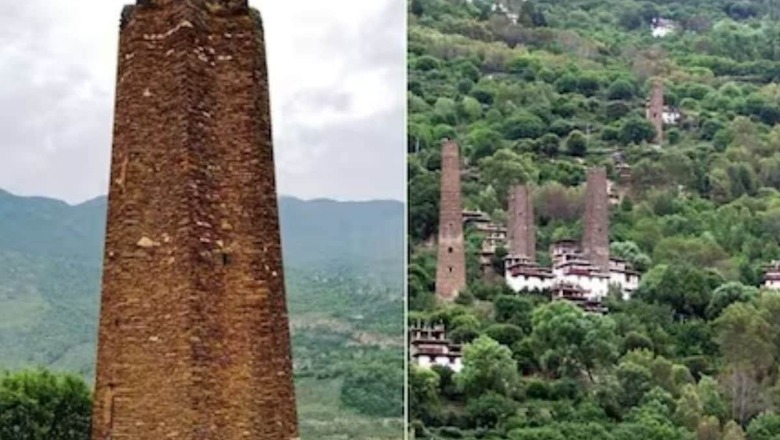
views
The Himalayan Towers in the Western Sichuan province, known as the Stone Star Shaped Towers, stand as mysterious wonders of human civilisation. Reaching a height of 200 feet, these towers are scattered in abundance between Central China and the Tibetan Autonomous Region, Kham. Their existence, shrouded in mystery regarding their purpose and origin, has become a viral sensation, capturing the fascination of netizens worldwide.
These striking towers, numbering in the hundreds across the region, have left local inhabitants equally perplexed about their history. The lack of clarity surrounding their purpose adds to the intrigue, with the towers’ images gaining widespread attention and amazement.
According to a report by Amusing Planet, French explorer Frederique Darragon brought these towers to the attention of the outside world during her visit to Tibet in 1998. Initially intending to research snow leopards, she redirected her focus upon encountering these towering structures. Over five years, Darragon meticulously documented the towers, mapping, photographing, and even climbing them to collect wood samples for analysis. Despite her extensive efforts, inquiries among residents yielded no information about the towers’ origin and purpose. Some speculate that the towers were initially constructed for city protection, but definitive evidence remains elusive.
During her research, Darragon also searched local Buddhist monasteries for textual references to the towers, finding limited information. She concluded that the history of these towers might have been passed down orally through generations, now forgotten or lost.
While Darragon did discover a few references to the towers in Chinese annals and 19th-century European travellers’ diaries, the mystery persists. The towers, captured in various shapes such as square, polygonal, and star, are constructed using cut stones, bricks, mortar, and wood. Notably, they are believed to possess the capability to absorb earthquake shocks. The tower heights range from 60 to 200 feet.
Himalayan Towers: hundreds of mysterious stone towers, some of them over 200 feet tall. Location: Western Sichuan between central China and the Tibetan Autonomous RegionThey clearly exist for centuries, the purpose and origin of these structures remain a mystery… pic.twitter.com/87gPGCE2Eq— LRMC (@LRMC_C) April 24, 2023
The Himalayan Towers stand as enigmatic structures, beckoning explorers and researchers to unravel the secrets concealed within their ancient stones.















Comments
0 comment